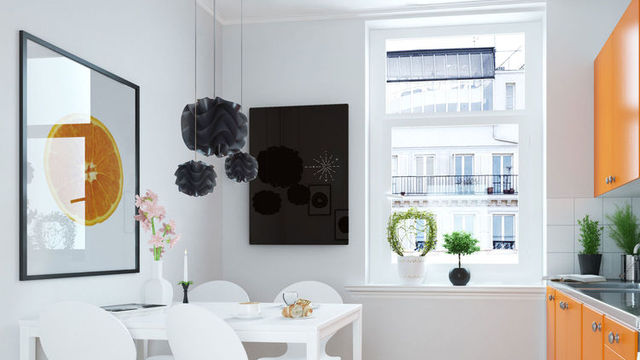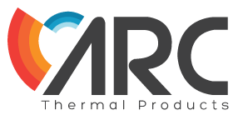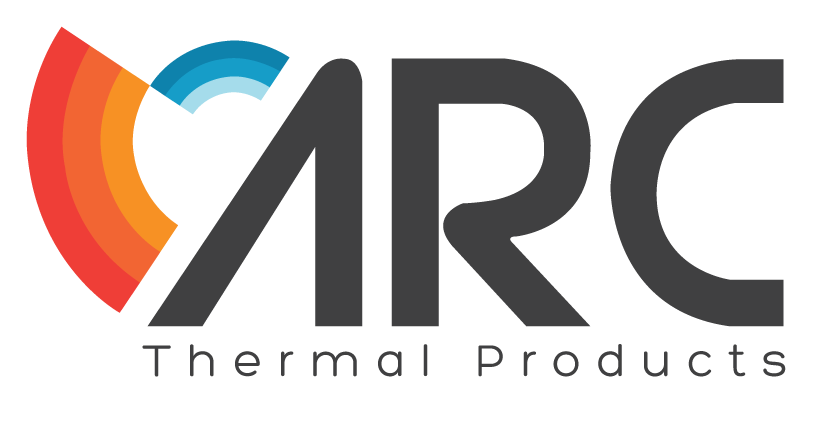Innovation of LAVA infrared heating
The real innovation in infrared heating lies in the energy efficient way in which it heats a room. In contrast to convection heating, LAVA Infrared heating directly warms thermal mass (ceiling, walls, objects and people) where the energy is stored and gradually released back into the room as heat.
Homogeneous heating of the room results in a pleasant environment with a constant humidity (approx. 45%) and minimal convection currents.
The room air temperature can be reduced by up to 2°C-3°C whilst maintaining the same level of thermal comfort and the warm drier walls become better insulators and prevent condensation and in the worst instances mould.
Benefits
Heating with Infrared benefits the installer, landlord, tenants and the building itself through:
- ease of Installation
- maintenance free operation
- no requirement for regular servicing
- easily removed for decorating
- 5 year warranty with a long life service (LAVA panels 20yrs +)
- lower heating cost from a silent system
- better insulation – walls infused with infrared are drier and therefore a better insulator
- healthier environment for asthma sufferers or others with respiratory issues
- improved peripheral circulation resulting from infrared directly warming the body
LAVA infrared’s unique selling proposition
A superior build quality and better performance. The LAVA infrared panels are made from European components with a high level of insulation behind the elements to ensure all the infrared is emitted from the front of the panel and into the room, making them one of the most efficient infrared panels on the market.
The panels utilise EMIMAX technology (unique to ETHERMA) which further enhances the performance. They require no ongoing maintenance and are magnetic-field free. The new panels also have a ‘plug & play’ control system which simplifies the installation process.
Business benefits
- sustainability benefits (reduced CO2 emissions (zero emissions at point of use), 100% recyclable)
- reduced running and maintenance costs (heating system and the building)
- superior thermal comfort = happier and healthier tenants
Cost savings
Heating cost savings of approx. 30% are achieved against convection heaters:
- LAVA Infrared requires approx. 20% less watts/m2 than convection heating to heat the same space. Heating thermal mass is more efficient than heating air as it retains the heat for longer
- reduced running cost (12% from reducing the room temperature by 2 degrees as occupants are directly heated, less on-time/day (approx. 25% less) – 4-5 hours/day for infrared compared with 7-8 hrs/day for convection and more accurate control)
- reduced heating demand resulting from drier, better insulated walls
- Maintenance and capital cost savings are determined by the current maintenance costs and the type of heaters the LAVA Infrared panel is replacing:
- no annual servicing or on-going maintenance costs (saving = £ case by case)
- longer equipment life expectancy of 20+ years against a standard convector heater of approx. 10 years (saving = £ case by case)
- reduced building maintenance resulting from drier, better insulated walls which prevents damp/mould (saving = £ case by case).
Case study: home renovation
The Initial Situation

An 80m² home was updated with new low energy windows. This presented an excellent opportunity to also bring the outdated heating system up to date.
The Solution
A part of the renovation works the existing night storage heating system was replaced with a LAVA Glass Design infrared heating system.
The replacement achieved the following results:
- The total heating load was reduced from 14 kW (night storage heaters) to 5 kW (Lava Infrared heaters)
- Electricity consumption fell by a staggering 31% – reduced by 1,500 kWh compared to an average of 4,800 kWh for the six preceding heating periods.
I am very pleased with the result! In addition, the reduction in consumption came with a clear increase in comfort – cozy warmth throughout the entire house. A further positive side-effect was the air quality – additional air humidification is no longer necessary
explained the enthusiastic customer
Electric infrared heating comprises an economical alternative, as it combines a lower investment cost with a reduced heat load.













